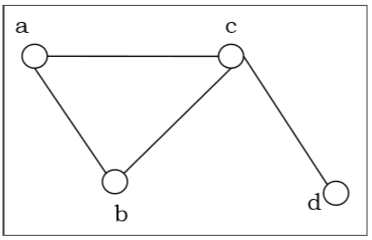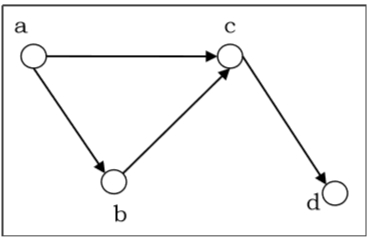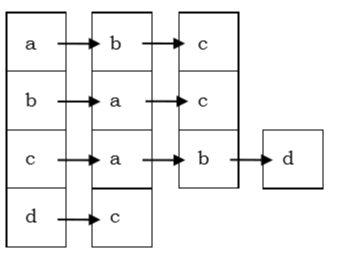
 Data Structure
Data Structure Networking
Networking RDBMS
RDBMS Operating System
Operating System Java
Java MS Excel
MS Excel iOS
iOS HTML
HTML CSS
CSS Android
Android Python
Python C Programming
C Programming C++
C++ C#
C# MongoDB
MongoDB MySQL
MySQL Javascript
Javascript PHP
PHP
- Selected Reading
- UPSC IAS Exams Notes
- Developer's Best Practices
- Questions and Answers
- Effective Resume Writing
- HR Interview Questions
- Computer Glossary
- Who is Who
Representation of Graphs
There are mainly two ways to represent a graph −
- Adjacency Matrix
- Adjacency List
Adjacency Matrix
An Adjacency Matrix A[V][V] is a 2D array of size V × V where $V$ is the number of vertices in a undirected graph. If there is an edge between Vx to Vy then the value of A[Vx][Vy]=1 and A[Vy][Vx]=1, otherwise the value will be zero. And for a directed graph, if there is an edge between Vx to Vy, then the value of A[Vx][Vy]=1, otherwise the value will be zero.
Adjacency Matrix of an Undirected Graph
Let us consider the following undirected graph and construct the adjacency matrix −

The adjacency matrix of the above-undirected graph will be −
|
|
a |
b |
c |
d |
|
a |
0 |
1 |
1 |
0 |
|
b |
1 |
0 |
1 |
0 |
|
c |
1 |
1 |
0 |
1 |
|
d |
0 |
0 |
1 |
0 |
Adjacency Matrix of a Directed Graph
Let us consider the following directed graph and construct its adjacency matrix −

The adjacency matrix of the above-directed graph will be −
|
|
a |
b |
c |
d |
|
a |
0 |
1 |
1 |
0 |
|
b |
0 |
0 |
1 |
0 |
|
c |
0 |
0 |
0 |
1 |
|
d |
0 |
0 |
0 |
0 |
Adjacency List
In the adjacency list, an array (A[V]) of linked lists is used to represent the graph G with V number of vertices. An entry A[Vx] represents the linked list of vertices adjacent to the Vx-th vertex. The adjacency list of the undirected graph is as shown in the figure below −


